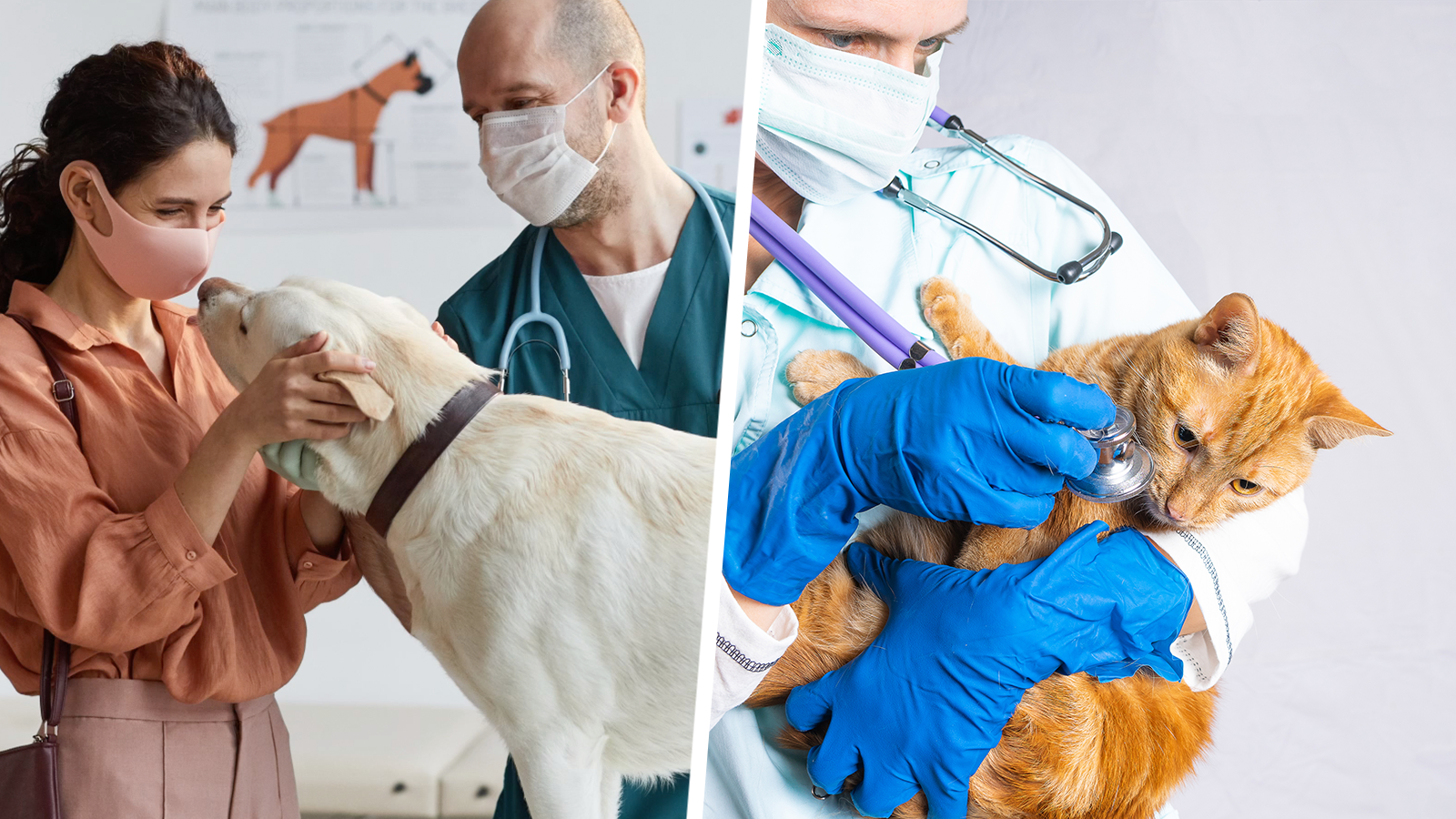
Your dog or cat is sick, and you head to the animal hospital. The veterinarian prescribes medications that you hope will make your pet better. But with pets, as with people, medication errors can happen.
Just as the Food and Drug Administration monitors medication errors that affect people, the agency watches out for mistakes that may harm animals. According to Linda Kim-Jung, PharmD, a safety reviewer in the Center for Veterinary Medicine’s (CVM’s) Division of Veterinary Product Safety, “A number of the medication errors that occur in the treatment of people are the same as those we are seeing in the treatment of animals.” For this reason, CVM collaborates with the human drug center at the FDA, the Center for Drug Evaluation and Research, Division of Medication Errors Prevention and Analysis to share, learn and disseminate outreach work on medication error prevention.
Errors Easily Made
Prescriptions for pets are sometimes filled in the same pharmacies that serve human patients. Errors can start with something as simple as an abbreviation.
“Unclear medical abbreviations are a common cause of the medication errors we review at CVM,” Kim-Jung says.
Commonly used in human and veterinary medicine, abbreviations are most often used when a veterinarian is writing drug orders or documenting information in the medical record. Medical abbreviations are not universal; nor are the variations. As a result, ambiguous abbreviations and symbols can cause transcription errors. For example, a pharmacist in a human pharmacy may not be familiar with certain veterinary abbreviations for different dosage amounts. CVM has found that the abbreviation “SID” (once daily), sometimes used in veterinary prescriptions, was misinterpreted as “BID” (twice daily) and “QID” (four times daily), resulting in drug overdoses.
“If the vet has prescribed a drug where there’s a strong correlation between the dose and the severity of side effects, an overdose can have serious consequences,” Kim-Jung says. “Poor penmanship can add to the problem, too.”
Problematic abbreviations such as “u” (units) or the Greek letter μ (mu) could be mistaken for the letter “o” or a number zero “0”. Also, the “mcg” abbreviation for microgram could be mistaken as “mg” (milligram). Additionally, when prescriptions are written without a leading zero or with a trailing zero, it can potentially lead to a dangerous overdose error. “So, a 5 mg dose written as 5.0 mg can be misread as 50 mg, potentially resulting in a 10-times overdose if the order is not clearly written,” Kim-Jung explains.
In addition, drug selection errors can occur because of labels or packaging that look alike. Similarly, the pharmacy may dispense a wrong drug if the drug names look alike when written on a prescription, or if the drug names sound alike during verbal orders.
For example, one veterinarian called in a verbal order for Zeniquin (marbofloxacin) an antibiotic for a dog and asked if it was available in generic form. The pharmacist misinterpreted the order as “Sinequan” and dispensed doxepin, a generic formulation of Sinequan. Sinequan (doxepin) is used to treat depression and anxiety in humans. The dog owner called the vet 24 hours later stating that the dog was ill. Fortunately, the dog was treated and recovered.
There are numerous opportunities throughout the treatment process (from writing a prescription to administering a drug) for different people to misinterpret or misread what is written or even typed on the medication’s label. “Mistakes can happen at the veterinary clinic, but also in the pharmacy which fills the prescription, and at home, when the pet owner gives the animal the meds,” Kim-Jung says.
Sometimes, a pet owner is uncertain how to use a syringe or measuring device, or it doesn’t work the way it’s expected to. CVM considers human factors like this when evaluating patient safety and works on system design strategies that can prevent use errors to mitigate patient harm.
Ask Questions
There are a number of things you can do before you leave the veterinarian’s office. Start by asking good questions, such as:
- What is the name of the drug? What is it supposed to do?
- If the drug comes with a device or packaged with a measuring device, ask your vet to show you how to use it properly.
- How much of the medication should I give each time?
- How many times a day should I give it?
- Should I give it before, during or after meals?
- How should I store it?
- What should I do if I forget to give a dose to my pet?
- Should I finish giving all the medication, even if my pet seems better?
- Are there reactions I should look for and call you about right away?
Help Your Veterinarian to Help You
Sharing information is a two-way street, Kim-Jung says, especially if you are getting a new prescription or seeing a new veterinarian. Be sure to:
- Keep a list of drugs that your animal is taking—including over-the-counter products, supplements and prescription drugs—and bring it with you to the veterinary office.
- Discuss any medications that your animal is allergic to or that have caused problems in the past.
- Discuss any serious or chronic health conditions that your animal may have.
Finally, there are some simple steps you can take at home to avoid medication errors:
- Keep animal drugs stored away from human drug products to prevent mix-ups. Accidental exposures to some human topical drugs and other type of human drugs can be dangerous and can cause fatalities in animals.
- Keep your animal’s medications in their original labeled containers.
- Do not share the medication for one animal with another animal unless directed by the veterinarian.
- Do not give human medications to your animal unless directed by the vet.
For more information on veterinary medication errors, see this page.
Your Report Matters!
The good news is you can play a role in helping to prevent medication errors by reporting medication issues directly to CVM/FDA.
Source: FDA
This webpage is made available by Online Press Release, Micro News

.jpg)





